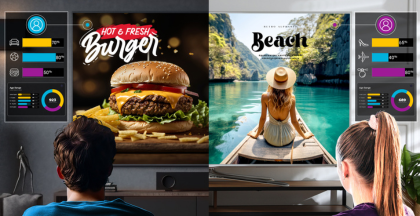Service continuity is the guarantee that your video is available to subscribers, all the time. It's a prerequisite for video streaming and broadcast, especially for live content. However, sometimes, things happen.
Certain content for major global events, like international sports competitions, or even the news, can attract a significant number of simultaneous viewers. Whether streamed live, with catch-up TV, or on-demand, it can create peaks in traffic. If your system is overloaded, or if there is a power outage, or a hardware failure, or if your main cloud provider experiences an outage, then your service can face serious repercussions from unexpected downtime.
So, what happens after a service glitch or failure? There is troubleshooting, video service recovery efforts, and the implications of receiving calls from unhappy subscribers. From a management angle, it can be a whirlwind that you have to financially absorb, and resolve.
It can be even harder if the outage or problems persist. You definitely don’t want the incident to impact the consumer’s perception of the reliability and quality of your service. No one wants to be caught in that situation. In times of limited travel options or constrained global logistics, spares and services could be harder to come by.
Also, with the spike in demand for streaming services, you don’t want to miss out on any opportunity to gain market share. By implementing a recovery strategy for your video streaming or broadcast service, you can effectively avoid the worst-case failure scenarios.
Common Approaches to Video Service Continuity
Let’s say you’re broadcasting or streaming video for a major event, with millions of viewers watching. Suddenly the feed goes completely black. A worst-case scenario that you absolutely never want to experience. A service failure during a live event, whether it’s delivered via broadcast or OTT, could be disastrous for your reputation. That’s when being able to maintain your channel with 100% service up-time is most critical.
Here are a few options when it comes to ensuring that your services are always running.
Replicate your services in the cloud, with multi-cloud capabilities:
You can replicate some, or all of your video workflows in the cloud, and on top of any existing video SaaS. With advances in service recovery today, cloud-based solutions now offer the same level of high-availability as the traditional hardware solutions. A cloud-native recovery solution for service continuity lets you duplicate all your services in the cloud, instantly and as needed. It’s cost-effective, scalable and resilient.
Resiliency is the key, and although the cloud has many benefits, a major advantage is dual-cloud or even multi-cloud redundancy. Take for example the recent outage that AWS encountered. Major companies and small businesses that relied solely on a single cloud provider were hit hard when the cloud provider experienced an outage. David Heinemeier Hansson, the CTO of Basecamp, commented that “maybe running half the internet off the same cloud service wasn’t such a great idea after all,”
Replicate hardware:
A more traditional approach to video service recovery is to fully replicate your equipment for the on-air service. You would need to recreate your entire infrastructure with a second set of hardware. That includes playout servers, storage, receivers, decoders, transcoders, channel modulators, channel processors, origin systems and channel signals.
Creating a duplicate hardware infrastructure requires a significant investment, which is not always the most economic option. A duplicate infrastructure must be constantly maintained, updated, and monitored. It may be a more familiar option, since you know the systems and vendors.
Although, if you do choose to replicate your infrastructure for service continuity, just remember that you would also have to replace the system components every three to five years. And, that would increase costs even further. Or, in some cases, it may create additional risks for downtime, if ever your machines are offline.
Main Use Cases for a Multi-Cloud Approach
To secure an event. In this case the service is activated just before the event, and then after, it’s released. You can use this model for one, or even multiple channels at a time. In this context, the on-air time might only be for a few hours or days and the associated costs minimal.
To secure a complete infrastructure. In this context you can have all, or even just a set of premium channels running 24/7 with a backup in the wings. The redundant version of the service is only activated as needed. The video recovery service can also be activated for testing or service adjustment. This redundant recovery service can run for days, weeks or even months, depending on the need.
The multi-cloud approach allows you to secure your services with multiple cloud providers, instead of relying on a single vendor. This gives you the power to ensure the highest availability for your services, non-stop and worldwide. Check out this blog if you want to learn more about cloud neutrality and how to harness the power of the cloud to boost reliability for your video services.
Key Benefits of Recovery Services in the Cloud
- Pay-per-use: A recovery service in the cloud is based on a pay-per-use model. The recovery service in the cloud business model makes service continuity affordable for everyone, from large broadcasters to small TV providers. It’s hard to justify the cost of maintenance, power, space, and human resources that a hardware-based solution requires when you have an option that is just as efficient. And it may even offer more advantages for your business.
- Total coverage worldwide: The recovery service is linked to all of your TV sources. You can use the video recovery service on-demand for tests, for pop-up channels, premium channels, or for whichever channel you want. You can provide the highest availability to all your subscribers around the world, and they'll appreciate it.
- Super-fast scaling: You can scale up and down dynamically based on your actual needs, and in real-time. Activating a temporary pop-up channel or testing a new TV channel is quick and simple.
- Simplicity: A fully managed SaaS recovery service in the cloud lets you avoid the complexities and costs associated with installing hardware or having to manage and operate.
Essential Features in a Recovery Service
Cloud neutrality and multi-cloud capabilities
A solution that can leverage multiple cloud providers ensures an unparalleled uptime to keep your content on-air all the time. Dynamic multi-cloud instances synchronize your video and keep streams fully aligned.
A cloud agnostic solution that is fully redundant and ready to be deployed to keep your operations live will provide you with the peace of mind you need. Cloud neutrality also enables rapid integration of new systems and services at any time, which is an added bonus if you plan to evolve your services down the line.
Committed activation time
Take committed activation time seriously. When a service failure occurs during a live event, time is of the essence. Video recovery solutions need to provide you with additional resources that can be activated in seconds.
Reliability
Reliability is also critical. Ensure that your video recovery service is ready for any event by testing it, periodically. This is also known as performing fire drills. For example, with Harmonic’s VOS360 platforms, you can schedule testing on a regular basis. Your service is consistently and reliably tested, and at the fraction of the cost compared to hardware installations.
The solution should also let you easily update service recovery definitions, whenever needed. With a recovery service in the cloud, your solution is updated more often, and it’s instant. You get greater protection and more robust security when your solution is up to date.
Scripting
Scripting via API is another essential capability to look for in a recovery service. You can then fine-tune your service configuration however and whenever you wvosnt.
From Source to Screen
Your recovery solution for service continuity should support not only live streaming but also a wide range of features, such as scheduled playout and statmux for broadcast. A truly cloud-native recovery service, based on microservices, is future-proof by design. You get new features fast, and instant upgrades so your solution is always running at its best.
Security
A successful video recovery service hinges on security. Premium live content, especially sports, needs to be protected. Look for a solution that can easily integrate DRM capabilities to ensure that only users that should have access to the content are able to view it.
Cloud-Neutrality & a Multi-Cloud Approach Are the Keys for Zero Downtime
Regardless of the event or issue, you want to know you can count on continued service. Your goal is to have zero downtime.
Harmonic’s VOS® Media Software, for on-premise configurations, and VOS®360 Media SaaS are examples of products that use cloud-based recovery services with intelligent and powerful workflows. With these or similar solutions you get the most reliable service continuity and only pay for the time that the service actually runs.
With a provider like Harmonic, that would give you five-9 availability, 24/7 secure and remote devops, worldwide. Harmonic provides solutions for whatever service continuity model you decide is right for your business. As the pioneer of cloud-based recovery solutions, we know how to ensure service continuity in times of need. Do you want to learn more about service continuity and video recovery solutions? Contact us to secure your video streaming services today.









